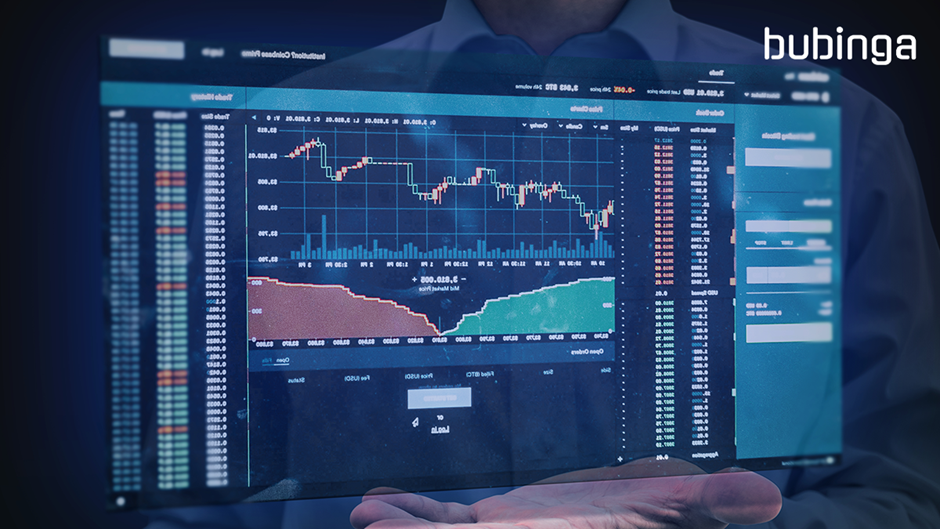Instructions for creating green ticks for Facebook

Step-by-step guide on how to create a green tick for Facebook. Learn how to verify your account and gain credibility with the green verification mark.
Technical analysis is a cornerstone of successful trading, providing insights into market trends and potential price movements. Among the plethora of technical indicators available, the Stochastic Indicator stands out for its ability to identify potential trend reversals and overbought/oversold conditions. In this article, we'll explore how traders can leverage the power of the Stochastic Indicator on the ブビンガバイナリー platform to make informed trading decisions and enhance their trading strategies.

The Stochastic Indicator is a momentum oscillator that compares a security's closing price to its price range over a specific period. It consists of two lines: the %K line and the %D line. The %K line represents the current price relative to the price range over a specified period, while the %D line is a moving average of the %K line. The Stochastic Indicator oscillates between 0 and 100, with readings above 80 indicating overbought conditions and readings below 20 indicating oversold conditions.
Traders can use the Stochastic Indicator https://bubinga-bo.com/stochastics/ to identify potential buy and sell signals based on overbought and oversold conditions. When the %K line crosses above the %D line and both lines are below 20, it may signal a buying opportunity as the security is potentially oversold. Conversely, when the %K line crosses below the %D line and both lines are above 80, it may signal a selling opportunity as the security is potentially overbought. Traders can also look for divergences between price and the Stochastic Indicator, which may indicate a potential reversal in the trend.
On the Bubinga platform, traders can easily access and apply the Stochastic Indicator to their charts to assist with technical analysis. By navigating to the indicator menu or toolbar, traders can select the Stochastic Indicator and customize its parameters according to their trading preferences. Common parameters include the period length (typically 14 periods), the smoothing factor, and the overbought/oversold levels.
Traders can incorporate the Stochastic Indicator into their trading strategies in various ways. One common approach is to use it in conjunction with other technical indicators, such as moving averages or trendlines, to confirm trading signals. For example, traders may wait for a Stochastic crossover in conjunction with a moving average crossover before entering a trade to increase the probability of success. Additionally, traders can utilize multiple time frames when analyzing Stochastic signals to ensure alignment across different time horizons.
As with any technical indicator, it's essential for traders to implement proper risk management techniques when using the Stochastic Indicator. This includes setting stop-loss orders to limit potential losses in case the market moves against the anticipated direction. Traders can use support and resistance levels identified through technical analysis or recent price action as reference points for setting stop losses. Additionally, traders should avoid chasing overextended Stochastic readings and wait for confirmation from other indicators or price action before entering trades.
The Stochastic Indicator is a valuable tool for technical analysis on the Bubinga platform, offering insights into market momentum and potential trend reversals. By understanding how to interpret Stochastic signals and incorporating them into their trading strategies, traders can make more informed decisions and increase their chances of success in the markets. However, it's essential to remember that no indicator is foolproof, and traders should always practice proper risk management and combine Stochastic analysis with other forms of analysis for optimal results.
Step-by-step guide on how to create a green tick for Facebook. Learn how to verify your account and gain credibility with the green verification mark.
Learn how to download torrent files directly using the Firefox web browser with the Torrent Tornado add-on. Simple steps for effective torrent downloading.
Learn how to view someone else’s TikTok followers, both on public and private accounts. Discover effective methods to access follower counts and improve your TikTok strategy.
Learn how to login to Facebook using your email, phone number, or even QR Code authentication without entering a password.
Learn how to stop echo during your Parsec streaming sessions with effective solutions. Echo is a common issue that disrupts communication in games, and we provide proven methods to eliminate it.
Discover how to change your avatar and cover photo on Zalo to express your personality. Follow our easy guide and optimize your Zalo profile image.
Learn how to manage your relationships on Zalo by marking close friends, similar to Instagram. This feature allows easy access to frequently contacted individuals.
Learn how to send screenshots via Viber quickly and without saving them. This guide provides step-by-step instructions to enhance your messaging experience.
Learn how to easily restore deleted messages on Zalo with our step-by-step instructions. Quickly recover your important chats on this popular messaging app.
Discover how to easily add background music to your personal Zalo page with our comprehensive guide on using Zalo for Android and iOS devices.
If you’ve ever found yourself at the end of a Minecraft raid, searching for the last raider to eliminate, you’re not alone. Many players have faced this challenge.
Learn how to uninstall Coc Coc browser completely from your computer, ensuring all data is removed. Follow these simple steps for an effective uninstallation.
Discover how to effectively use the Toshiba AW-A800SV washing machine control panel with our detailed guide!
Discover how to effectively use emergency features on Samsung Galaxy Watch and other smartwatches, including SOS alerts, fall detection, and health records.
Discover how to effectively <strong>share QR code on Zalo</strong>. QR codes enhance connectivity, enabling easy friend requests and more on Zalo.













